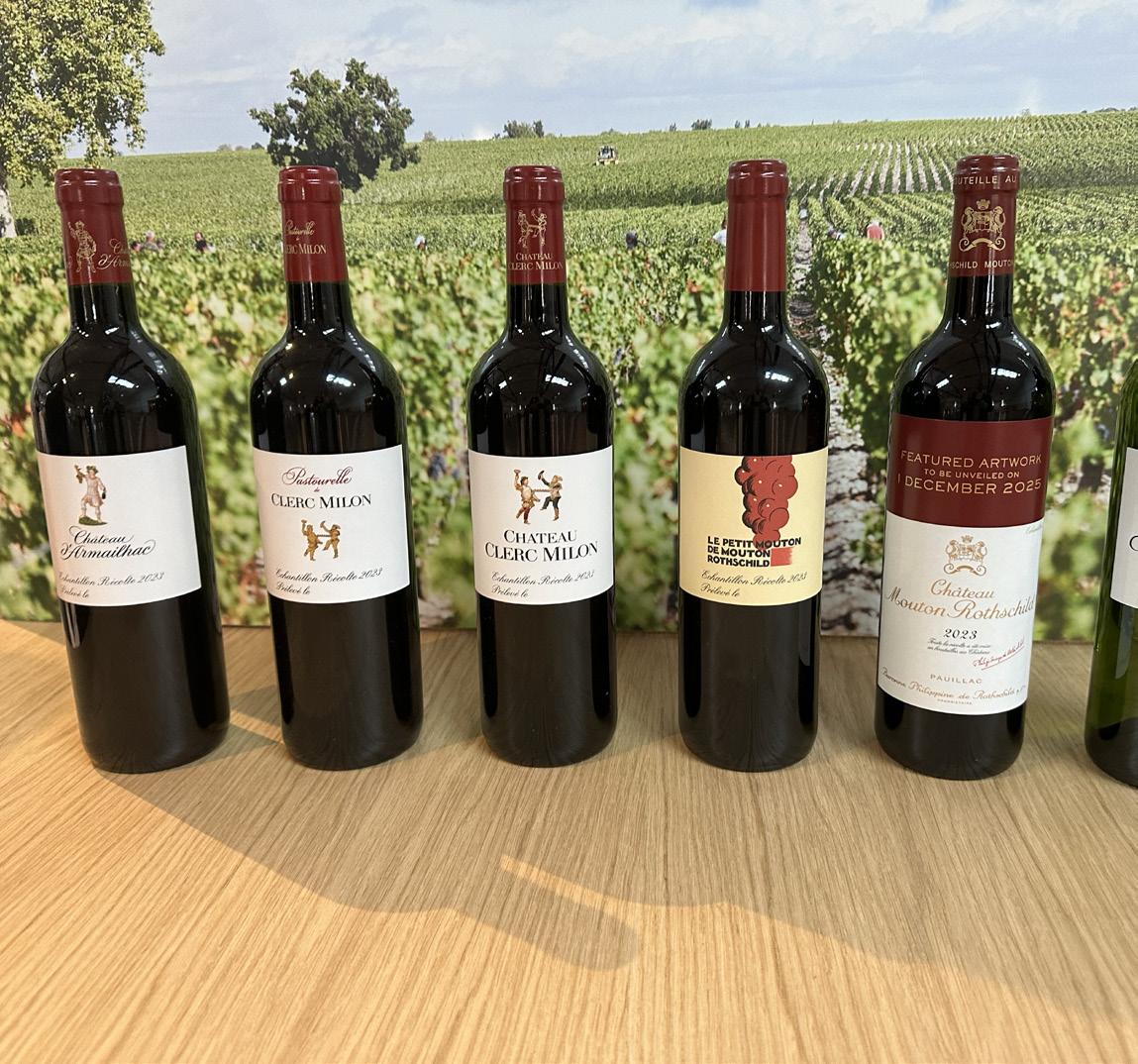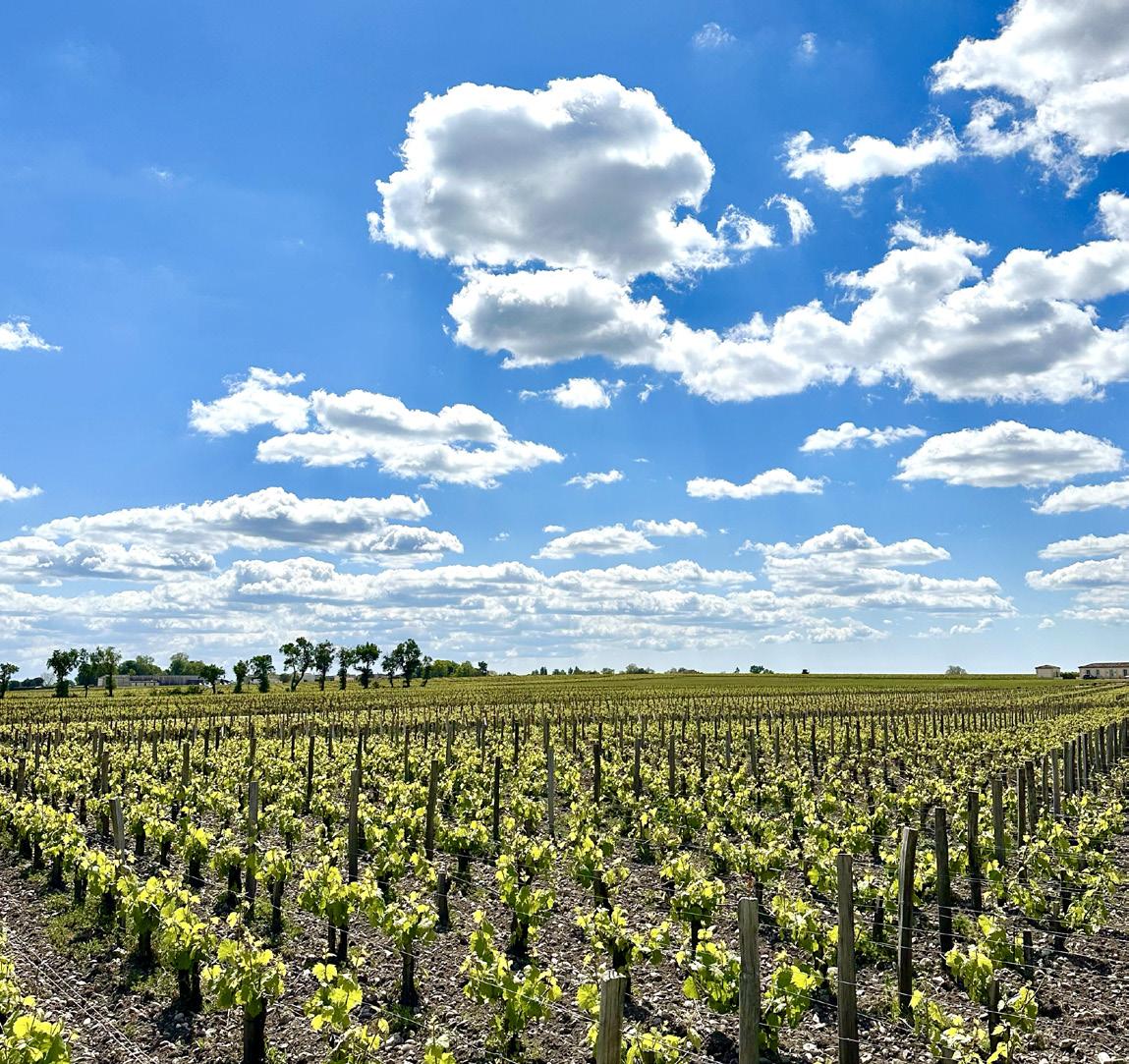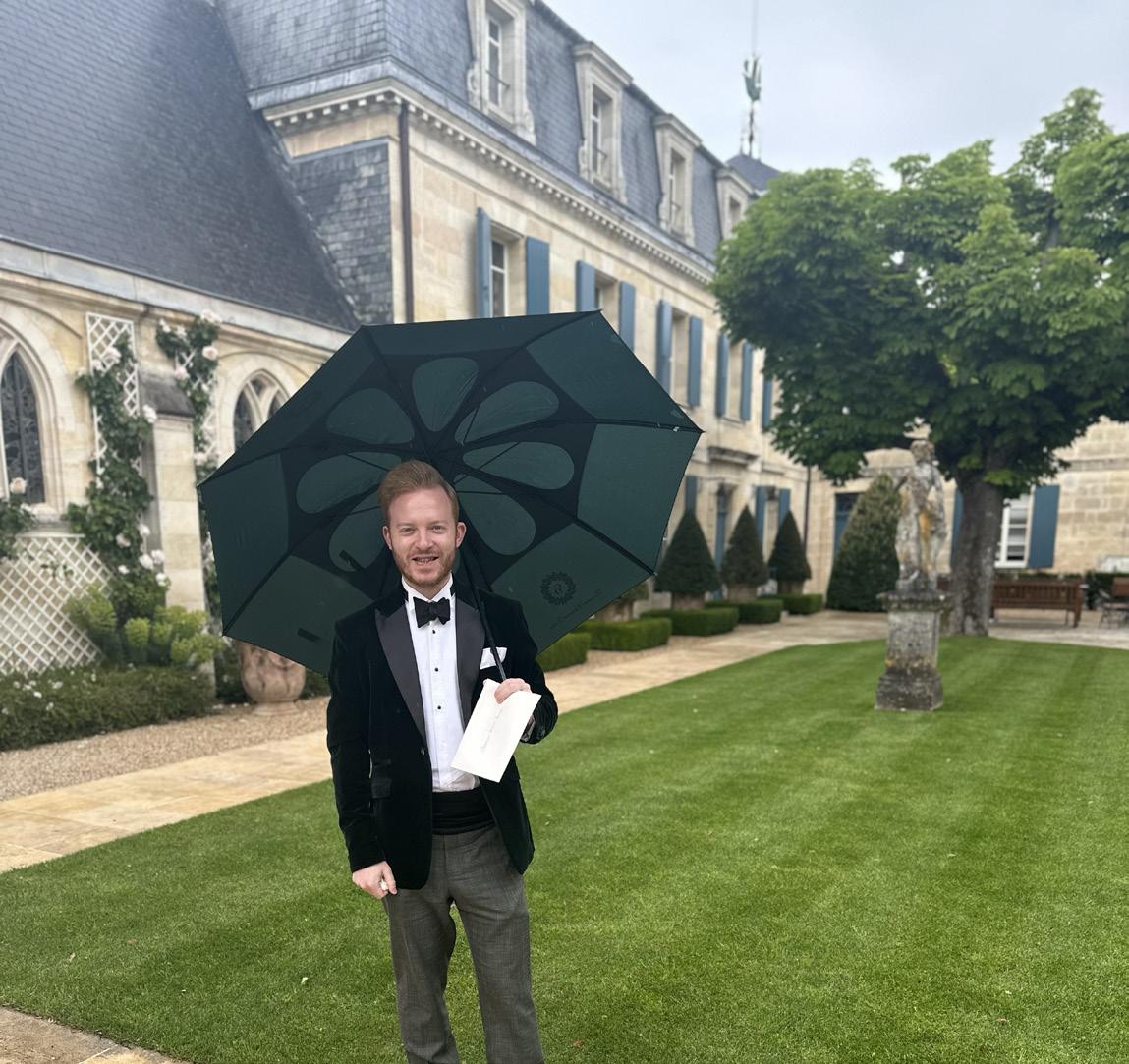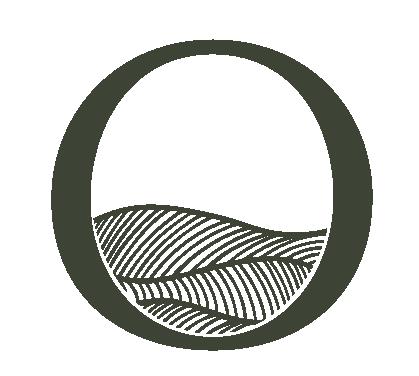

B RDEAUX 2023
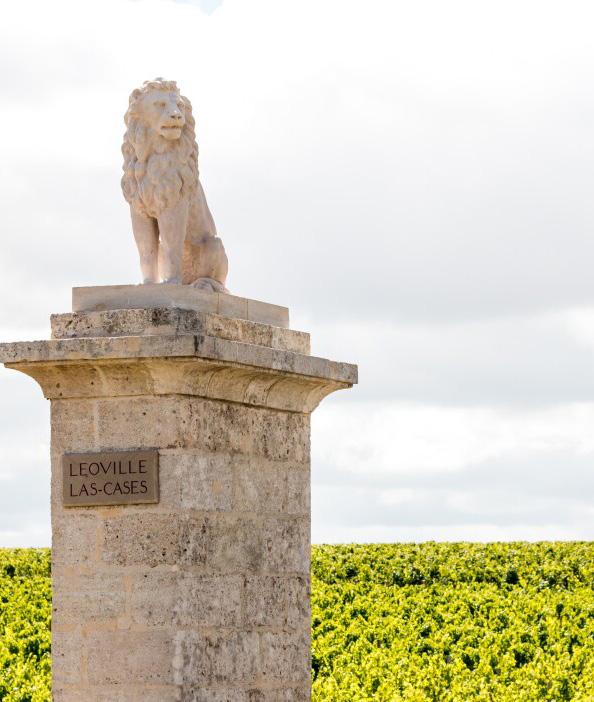

 Jane Anson
Jane Anson
“2023 is a reminder that what Bordeaux does best is effortless construction and producing well balanced, structured wines that are made to delight over the long term” "The young wines, tasted from cask, reflect this paradox, possessing—at their best—the depth, density and ripe tannin of a sunny vintage but also the vibrant, expressive aromas and flavors of a more traditionally “Atlantic” season. The best 2023s are just as exciting as the best 2022s"
William KelleySpots of astounding quality are scattered from underlies the best wines is the brightness or nascent energy that, in my experience, augurs This brightness derives from the fruit, acidity, concept of their personality, a combination of all.

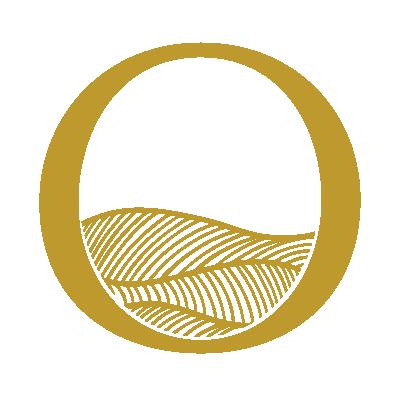
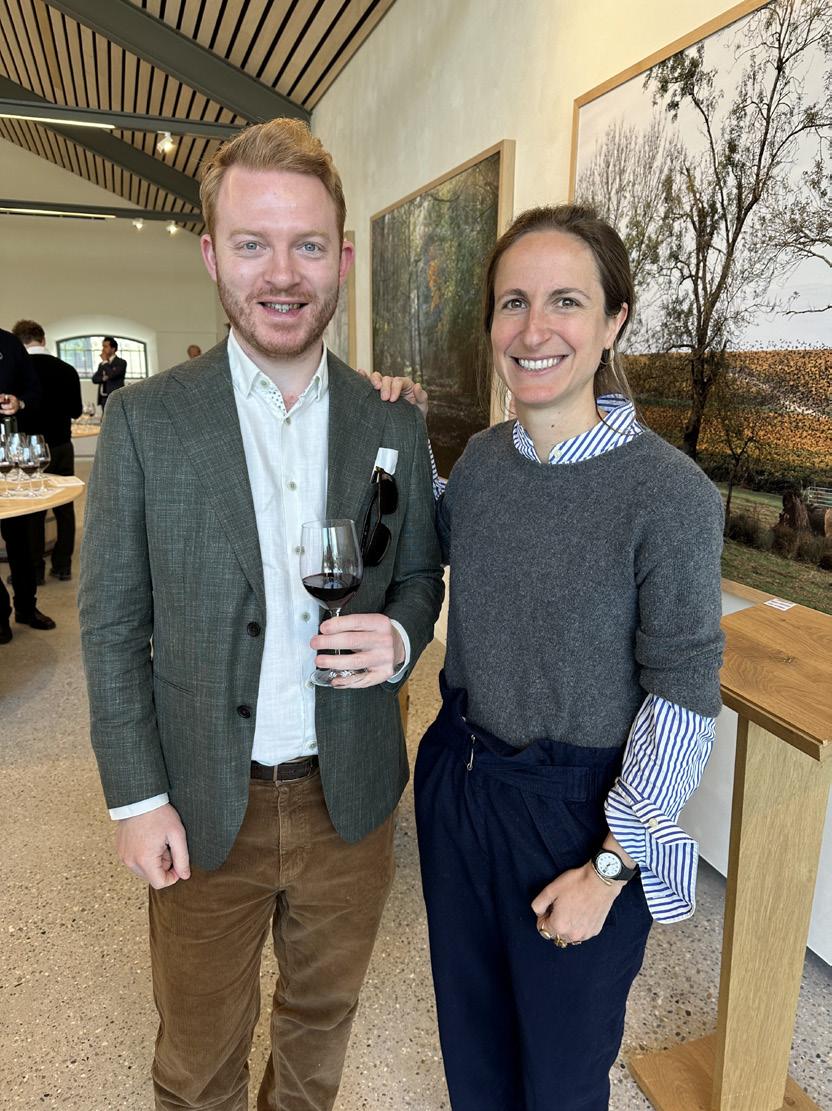
With Saskia
2 023: EXECUTIVE SUMMARY 01.
And the voice said, "Daddy, there's a million pigeons" "Ready to be hooked on new religions"
Hit the road, Daddy Leave your common-law wife
Spread the religion of the rhythm of life
And the rhythm of life is a powerful beat
Puts a tingle in your fingers and a tingle in your feet
Rhythm in your bedroom, rhythm in the street
Yes, the rhythm of life is a powerful beat
Rhythm of Life, from Sweet Charity,
Replace ‘rhythm of life’ with ‘Bordeaux en primeur’ and the above lyrics still sing. Bordeaux en primeur is here again. The irrepressible annual campaign where the vinous world descends to taste the most recent vintage, to wax lyrical, celebrate, ruminate and, occasionally, hesitate.
There’s been more hesitation in recent years with greedy pricing souring the powerful beat, and fewer and fewer ‘pigeons… ready to be hooked on new [wines]’. The rhythm of Bordeaux en primeur has never been more in need of a defibrillator, and so as I land back on terra firma after a week in the region, criss-crossing both banks of the river to taste hundreds of samples from barrel, the big question is: ‘does Bordeaux 2023 put a tingle in my fingers and a tingle in my feet?’
My emphatic answer is ‘yes’.
But before looking at the overall quality of what is a very good vintage, it serves first to highlight the
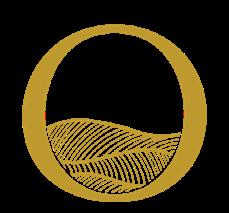
elephant in the room: pricing. En primeur only really works if every part of the chain (château, to courtier, to négociant, to broker, to client) can achieve value. In recent years that hasn’t always been the case, and I have increasingly turned down allocations of sought-after wines because they simply didn’t offer clients true value. I am not willing to play that game anymore and I will never offer my clients wines which I wouldn’t buy myself.
The noises coming out of en primeur week are of substantial drops in release prices, a mass diplomatic mission to appease the masses and put the spark back into en primeurs. If they come to fruition then there will be much joy and, more importantly, value, for buyers.
It is impossible to discuss Bordeaux en primeur without acknowledging the macro-economic, geopolitical and consumer environment. Inflation is up, interest rates are up, energy prices and the costs of goods are up, and buying appetite is down. In trying times (and conflicts in Ukraine and Gaza, plus tensions in Taiwan and in the US presidential race more that fit that bill) luxury goods or alternative assets are the first to be dropped by consumers and investors. The cost of borrowing money has gone up for everyone, from producers, to négociants, to clients, and inflation has devalued goods already in circulation.
Canny investors who have sought wine as an attractive alternative investment sit on physical stock of great wines, a great hedge against inflation and store of value. But what of those about to be bombarded with a daily deluge of ‘must buy’ Bordeaux en primeur releases? The prices of 2021 and then 2022 cannot return, that is for certain, and it explains why price drops of 18-30% on upcoming releases have been openly discussed. I’ve even heard of particular big-name producers hinting at releases of up to 40%. Such reductions would make this very good Bordeaux vintage both incredibly appealing and imminently investable (subject to our investment algorithm criteria being met, of course).
[Note prior to publication: Château Léoville Las Cases, usually a parsimonious estate, has just released their high-scoring wine at a massive 40% reduction to 2022, so all bets are off and this looks like being a bumper value year for clients].
Commercial director at Château Lafite Rothschild, Jean-Sebastien Philippe, told me the following: “We understand, particularly here, that we have to show to the market and the buyers that we hear them and that the current economic situation is challenging. We want to lead the way with our pricing to honour the loyalty of clients in the past few years and ensure everyone can have a good campaign because these are excellent wines: we want people to taste them”. Compelling & comforting words from an estate who could charge whatever they like for their iconic brand.
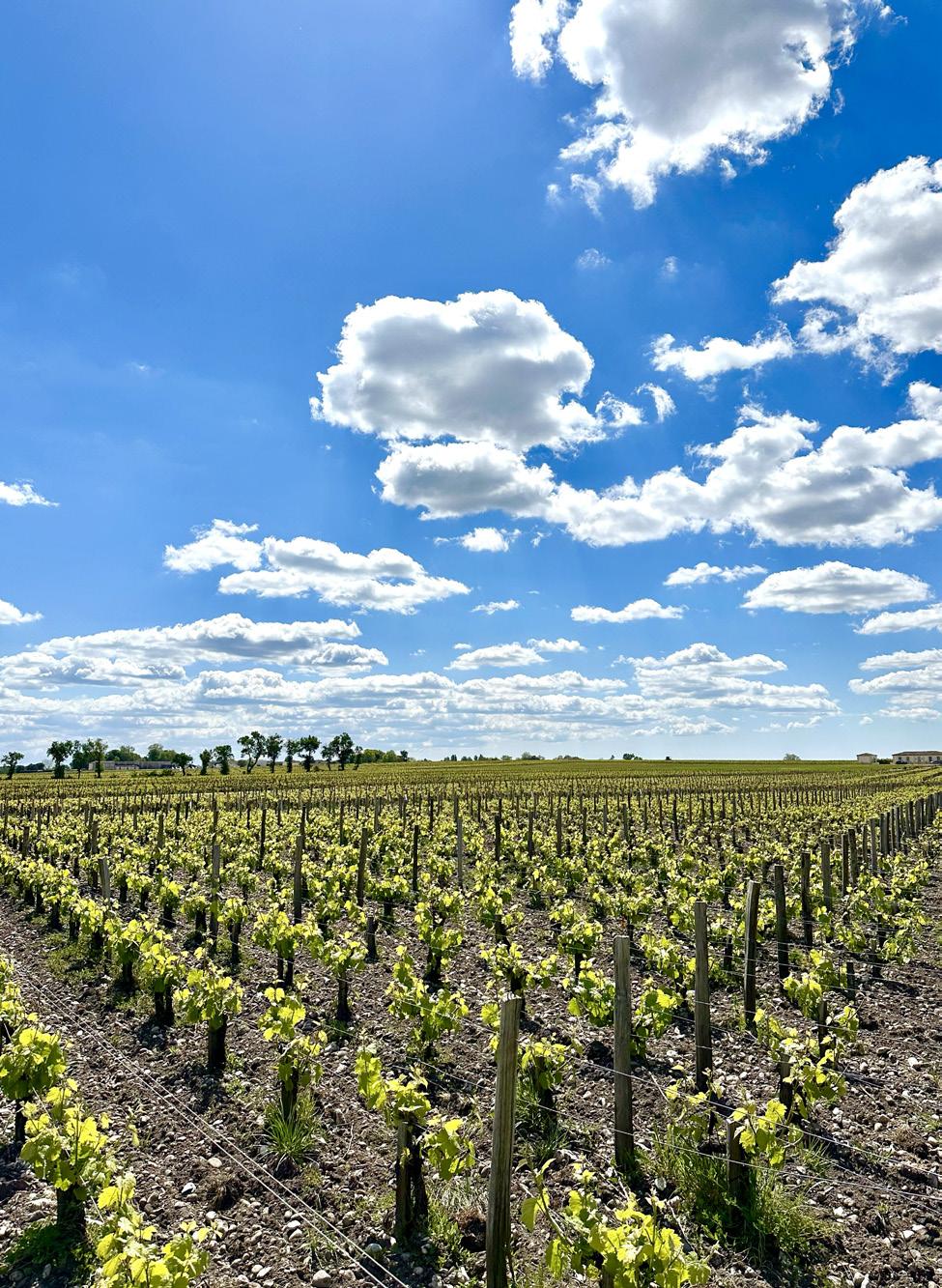
[Additional note prior to publication, Lafite Rothschild have released their wine at a 32% drop in price compared to the 2022, and it is one of the most affordable Lafites on the market. Duhart-Milon has the highest score across the past ten vintages and saw a 10% price reduction. Really promising times at Domaines Barons de Rothschild for clients.]
As it was in 2020 when a global pandemic threatened financial markets, châteaux simply must read the room, or they will be locked out of it forever. Get pricing right and Bordeaux 2023 could fly for everyone.
The wines of 2023 were a joy to taste, and I can count on one hand offerings which were less successfully made. As my vintage report will uncover, this was a very warm vintage, beset in May and June with sporadic but heavy rainfall, making for humid conditions, the perfect breeding ground for mildew, the fungus which can devastate vines and reduce yields. This was the battleground for winemakers in 2023 and those who managed the heat and sorted their grapes well, made wines with juicy, ripe fruit character, but also clean, mineral structure, with well-integrated tannins. Some estates made the best wines I have tasted, whereas others showcased a different style, or a lighter touch to try and encapsulate the vintage in a glass. Overall, I was charmed by the sensuousness and precise nature of the vintage and have a modest wish list of wines to try and obtain for you, my clients.
It is looking like 2023 will be a return to value for Bordeaux, and if it is then I can recommend a cavalcade of wines that will give drinking delight from as little as £8 a bottle, as well as potential assets that will deliver at much lower prices for canny investors looking to make the most of the
My biggest tip is this, ask questions, be inquisitive, and shop around for value, as there should be plenty. My advice, stock up as much as your wallet allows. For detailed buying or investment advice,
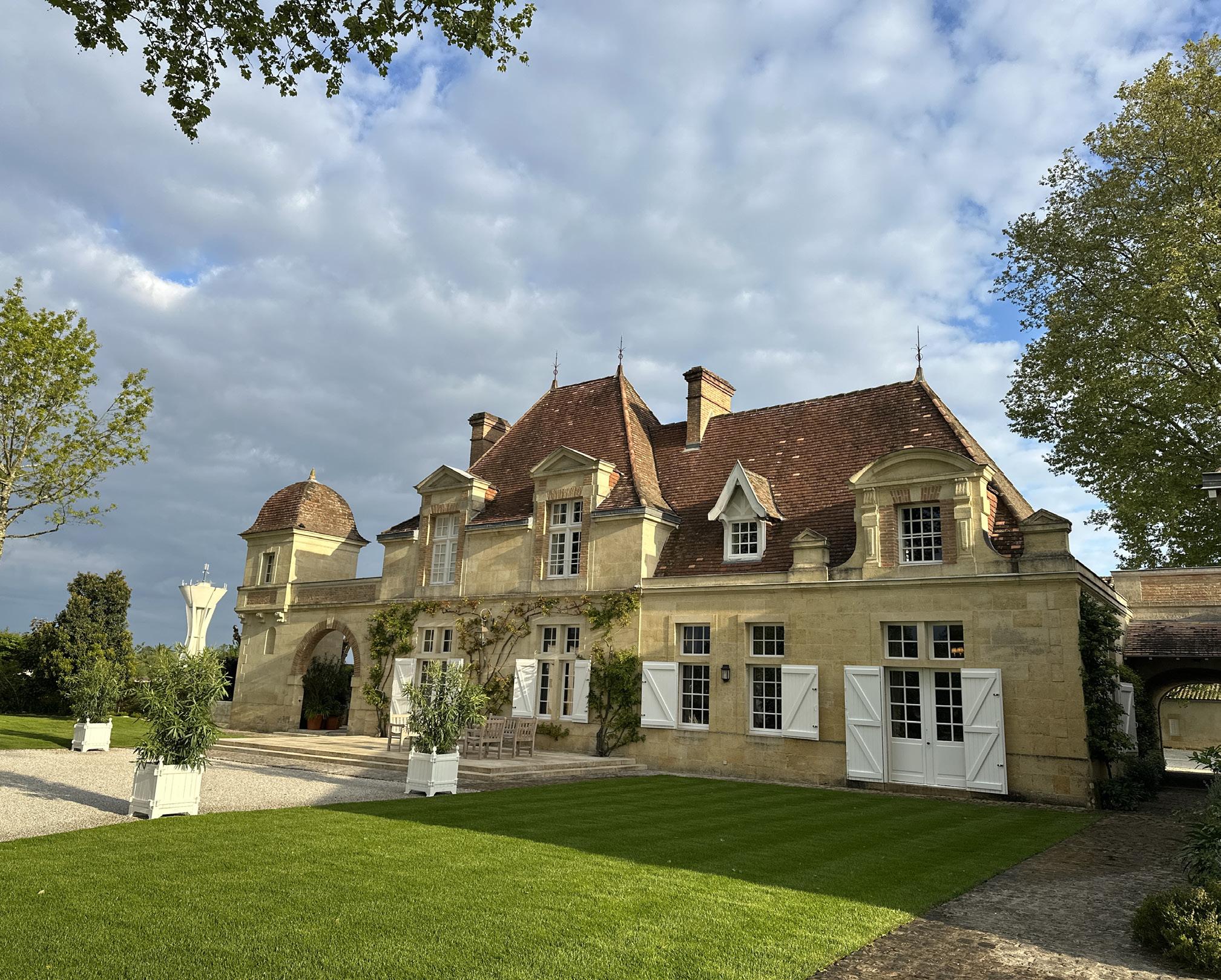

It is looking like 2023 will be a return to value for Bordeaux, and if it is then I can recommend a cavalcade of wines that will give drinking delight from as little as £8 a bottle, as well as potential assets that will deliver at much lower prices for canny investors looking to make the most of the wine market about to exit an eighteen-month dip.
My biggest tip is this, ask questions, be inquisitive, and shop around for value, as there should be plenty. My advice, stock up as much as your wallet allows. For detailed buying or investment advice, please don’t hesitate to contact me, I will be delighted to help.
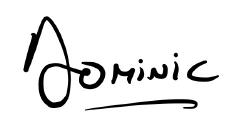
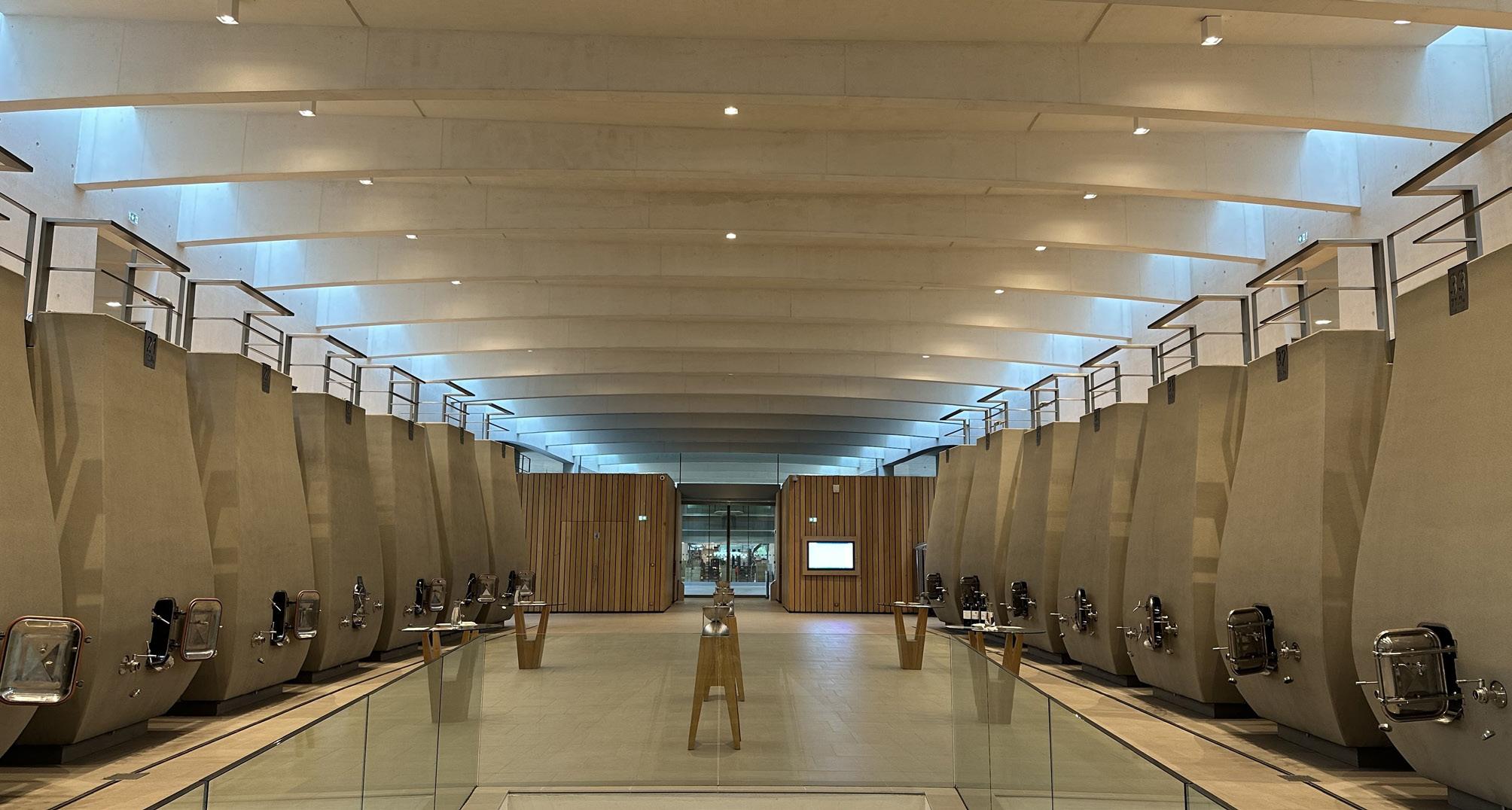


 Clockwise from far left: At Château Rauzan-Segla in Margaux for an early morning barrel tasting; the impressive vat room at Château Cheval Blanc; owner Alfred Tesseron, who made an astonishingly brilliant Château Pontet Canet in 2023; a kind sketch with watercolours of yours truly by Eve Grosset at Château Nenin in Pomerol; assortment of bottles at Château Pavie
Clockwise from far left: At Château Rauzan-Segla in Margaux for an early morning barrel tasting; the impressive vat room at Château Cheval Blanc; owner Alfred Tesseron, who made an astonishingly brilliant Château Pontet Canet in 2023; a kind sketch with watercolours of yours truly by Eve Grosset at Château Nenin in Pomerol; assortment of bottles at Château Pavie
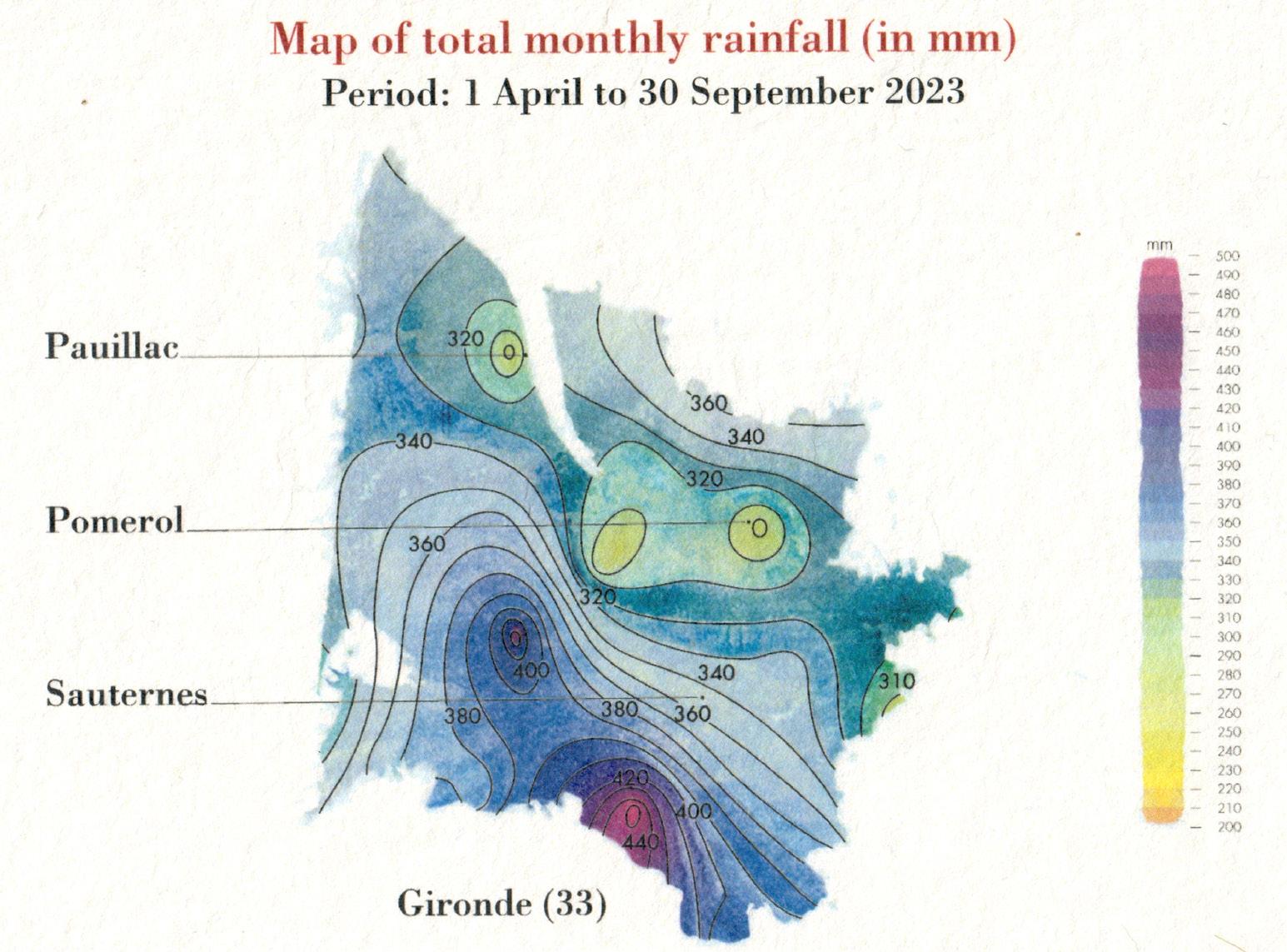
VINTAGE REPORT 02.
2023 was a generous vintage, with lots of warmth, some mildew pressure in late spring and then a long, uninterrupted harvest in ideal conditions, meaning wines of excellent quality and, for the first time in four years, quantity.
A curious aspect of vine growing is that the seasonal cycle of a vine is more like eighteen months than twelve, with the flowering of the previous vintage and the conditions during dormancy between vintages contributing hugely to the success of the next. After a winter that was colder than average but relatively dry, March marked a turning point, with average temperatures in Bordeaux above seasonal norms and rainfall replenishing water reserves ready for the season ahead.
Bud-break came about in a very habitual manner at the end of March and start of April and whilst there were cold periods, there was no frost damage. Flowering took place under ideal weather conditions and thanks to record sunshine ended just a few days later, heralding generous yields and a high rate of fruit set on the vines. June, like May, was largely hot and dry, ideal for the continued development of the vines and leading to predictions that harvest could be even earlier than in 2022.
At the end of June and beginning of July, the merlot vines across Bordeaux were particularly susceptible to the fungus known as mildew, caused by sporadic, biblical downpours, creating humid environments in which fugus thrive. Most properties now farm organically or biodynamically, and so spraying copper onto the vines was the best course of action to protect from mildew, but it meant having teams of sprayers ready to act quickly, seven days a week, as mother nature never takes a day off. This separated the big estates, with bottomless pockets and large teams, from those making do with just a handful of helpers and hand-me-down equipment. In Bordeaux, due to the size and scale of the vineyards, money is the difference.

Very low rainfall in July eased the disease pressure and successive heatwaves from 17 to 24 August and 3 to 11 September were the only other threat, with the potential to cause sunburn. Advances in agronomic management meant that there were myriad ways of fighting the extreme solar influence: Alfred Tesseron, owner at biodynamic trailblazer Château Pontet Canet, told us that they made a special sprayable sunscreen for the grapes, fashioned from powdered clay mixed with water, which did an excellent job of shielding fruit from the intense heat, whilst at the excellent Château Berliquet, they trained the leaf canopy much higher than usual above the vines, to provide more effective shading.
There was an abundance of ripe grapes in 2023 because of quality flowering in warm conditions in the spring, with classic berry weights, harvested in some cases across an entire month in ideal weather conditions. After careful sorting on reception at the winery to ensure that sunburnt or mildew-affected grapes didn’t slip through the vinous net, ‘less is more’ was the general approach to winemaking, ensuring no overextraction of tannins or colours and allowing the aromatics of such a generous vintage to shine, alongside ample freshness and mineral structure.
If 2021 was a year of frosts and 2022 was a solar vintage, then 2022 is perhaps characterised by the tension between one of the hottest years on record and the rainstorms which heightened disease pressure in the ensuing humidity. That most estates across the world’s most famous wine region were able to brush this viticultural threat aside says as much about advances in agronomics and technology as it does for vine evolution. I don’t believe that similar conditions twenty years ago would have elicited wines of such ripeness, purity, and precision, with persistent freshness and beguiling aromatics. 2023 was a joy to taste and I have little doubt that wines from the cru bourgeois level up to the First Growths will deliver beautifully in both the short and longer terms.
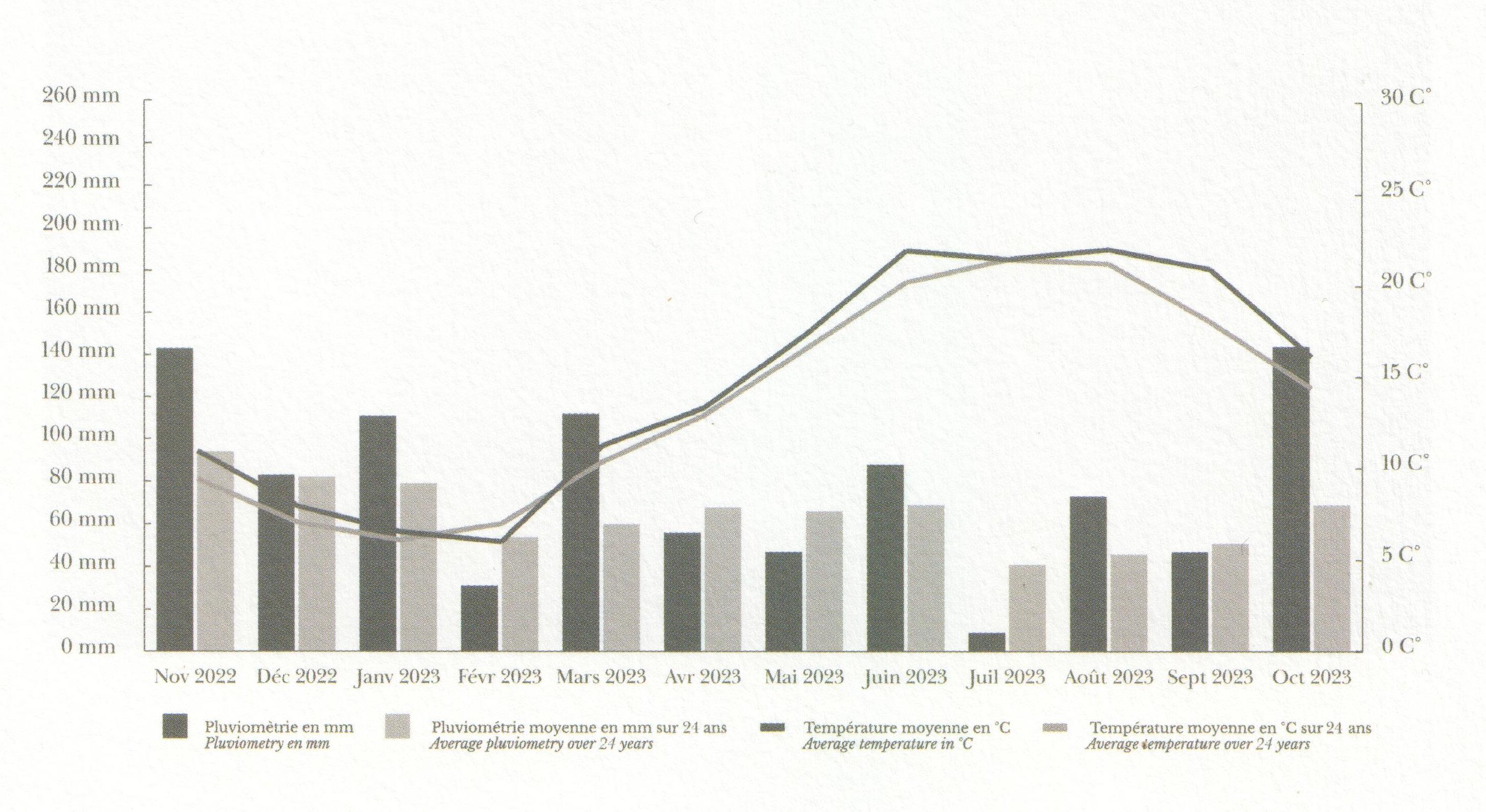
CRITICAL CONSENSUS 03.

As you read this at the start of May, the Bordeaux 2023 campaign has already begun, with châteaux anxious to strike early with their releases and hoover up as much media attention & consumer capital as they can in what will likely be a frantic and short campaign. For context, there is usually a grace period of 2-3 weeks after tasting the wines in Bordeaux for merchants like me to write our reports and send négociants our wish lists, with the campaign beginning in late May or early June and lasting until the end of July. Not so this year, which has seen an early start and will likely see a very early end.
Despite the very early kick off, critics have done their bit by releasing their reports early, allowing us to incorporate their impressions of 2023 as we begin to offer the best wines. At Clos Fine Wine, the critics who lead the way are Neal Martin, Jane Anson, Jeb Dunnock and William Kelley, with Martin the most influential, his notes (and scores) demonstrably moving the market.
Critics were very complimentary about Bordeaux 2023, with many taking time to point out its snow-capped peaks and the way that the best wines managed to fuse juicy fruit with present, ripe tannins and a more ‘classic’ minerality and acidity. All commented on the global market and agreed that the vintage could offer much value if prices were substantially lower than in 2022. A selection of critical highlights can be found on the next page.

 Neal Martin, Vinous
Neal Martin, Vinous
"I titled this report “The Dalmatian Vintage” because spots of astounding quality are scattered from Bordeaux’s head to toe. Some châteaux pulled out magical wines from their top hat, surpassing those aforementioned years in one or two cases.
One virtue that underlies the best wines is the brightness or what the French term “éclat”. It’s a kind of nascent energy that, in my experience, augurs a sample that will evolve into a great wine. This brightness derives from the fruit, acidity, fineness of tannins and the more intangible concept of their personality, a combination of all…. The pinnacles of 2023 possess all these factors.
It cannot be denied that 2023 is bejeweled with a clutch of spellbinding wines. Look closer and you find that Bordeaux still manifests superb wines at Cru Bourgeois and Petit Château levels. Don’t ignore them. The vintage has its virtues: pinnacles of quality, lower alcohol, traits of classic claret, freshness and sapidity".

Jane Anson, Inside Bordeaux
"2023 is a reminder that Bordeaux excels in effortless construction and producing well balanced wines that are made to delight over the long term. Not everywhere has succeeded, but there are hundreds of bottles that are worth tracking down, and that you will be thrilled to discover.
There is an enjoyable Left Bank-Right Bank distinction in this vintage, that was sometimes less clear in 2022 with the overall ripeness of the fruits. Personally, I welcome a return to a more nuanced, terroir and estate-driven feel to the wines".
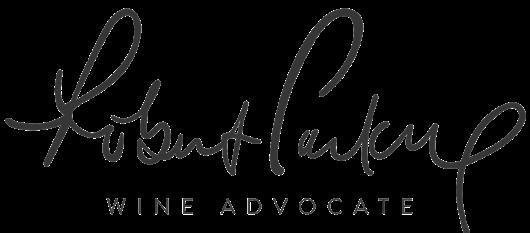 William Kelley, The Wine Advocate
William Kelley, The Wine Advocate
"The young wines, tasted from cask, reflect this paradox, possessing—at their best—the depth, density and ripe tannin of a sunny vintage but also the vibrant, expressive aromas and flavours of a more traditionally “Atlantic” season. The best 2023s are just as exciting as the best 2022s.
The best 2023s exhibit the fully ripe tannins and suave, seamless mouthfeels of a sunny vintage such as 2019; yet their vibrant aromas and flavours, evocative of fresh fruits and flowers, are more indicative of a cooler year.
Above all, however, the vintage tended to amplify the voice of each estate and terroir, producing extremely characterful wines".

WHY BUY EN PRIMEUR? 04.
The en primeur system or ‘wine futures system’ is the yearly ‘betting’ on wine futures that takes place in April when journalists, critics and wine buyers from around the world descend upon Bordeaux to give their prognosis on the most recent vintage, following which the Châteaux, in consultation with a courtier (or broker), set their prices accordingly, releasing them to the wider market around 12-18 months before the wines are physically available.
For many centuries the exchange was purely between local merchants and châteaux, but since the late 1970s the system has become increasingly public-facing. The rise to prominence of Robert Parker Jr as critic-in-chief established a link between unbiased critic and end buyer, with the 100-point scoring system providing an easy to understand rating for each wine, with 100 ostensibly marking out ‘perfection’.
For wine lovers, en primeur was a guaranteed method of securing top clarets ahead of the rest of the market. The normal increase in value of the wine between en primeur sale and physical bottle in a shop in, say, London, meant that often the approach of buying two cases of wine ensured you could eventually sell the second at a premium, allowing you to drink the first case at a heavily subsidised cost. As the Place de Bordeaux has grown in scope, with hundreds of châteaux coming in under its umbrella, it continues to offer wine lovers access to the top wines, but also a slew of smaller, hidden gems which have gone on to become much loved favourites of the claret-drinking set: Beaumont, Batailley, Duhart-Milon, for example.

For investors, the futures system plays into the key fundamentals of Fine Wine investment, exacerbating both the brand positioning of top wines, which are offered on sought-after allocations, and the inverse supply curve which drives the value of this alternative investment asset, with decreasing allocations increasing the scarcity of top wines. Over recent years the châteaux have held back increasing quantities of stock to release years down the line at a premium, squeezing the stocks for negociants and driving up prices.
Recent vintages have shown that en primeur still offers value to drinkers and investors alike, but so much depends on the pricing of the vintage by the châteaux: price keenly like the 2019 vintage, released during the early stages of a global pandemic, and the vintage will offer enticing value, but this can have a knock on effect to back vintages, as it did the 2017 vintage, an altogether less successful year which was suddenly priced at a premium to a superior 2019, devaluing it rapidly (though the wines are, in my opinion, wonderful to drink).
Released against the backdrop of global financial instability, rising interest rates & inflation, and geopolitical concerns, the Bordeaux 2023 vintage could herald a resetting of the en primeur system and reestablishment of its value proposition to investors. Indeed, with superb, potentially perfect offerings from Léoville Las Cases and Lafite Rothschild released at 40% and 32% discounts respectively, it seems clear to me that this will become a campaign for investors to make hay with.
My approach as always is to only offer wines which I truly feel give value. For drinking wines that means those we loved tasting and which the critics did, too, whilst investment-grade wines must meet strict criteria, based on score and release price (more on on this on the next page). Arguably the best aspect of en primeur is receiving cases of wine you paid for two years previously: always a wonderful, vinous surprise!
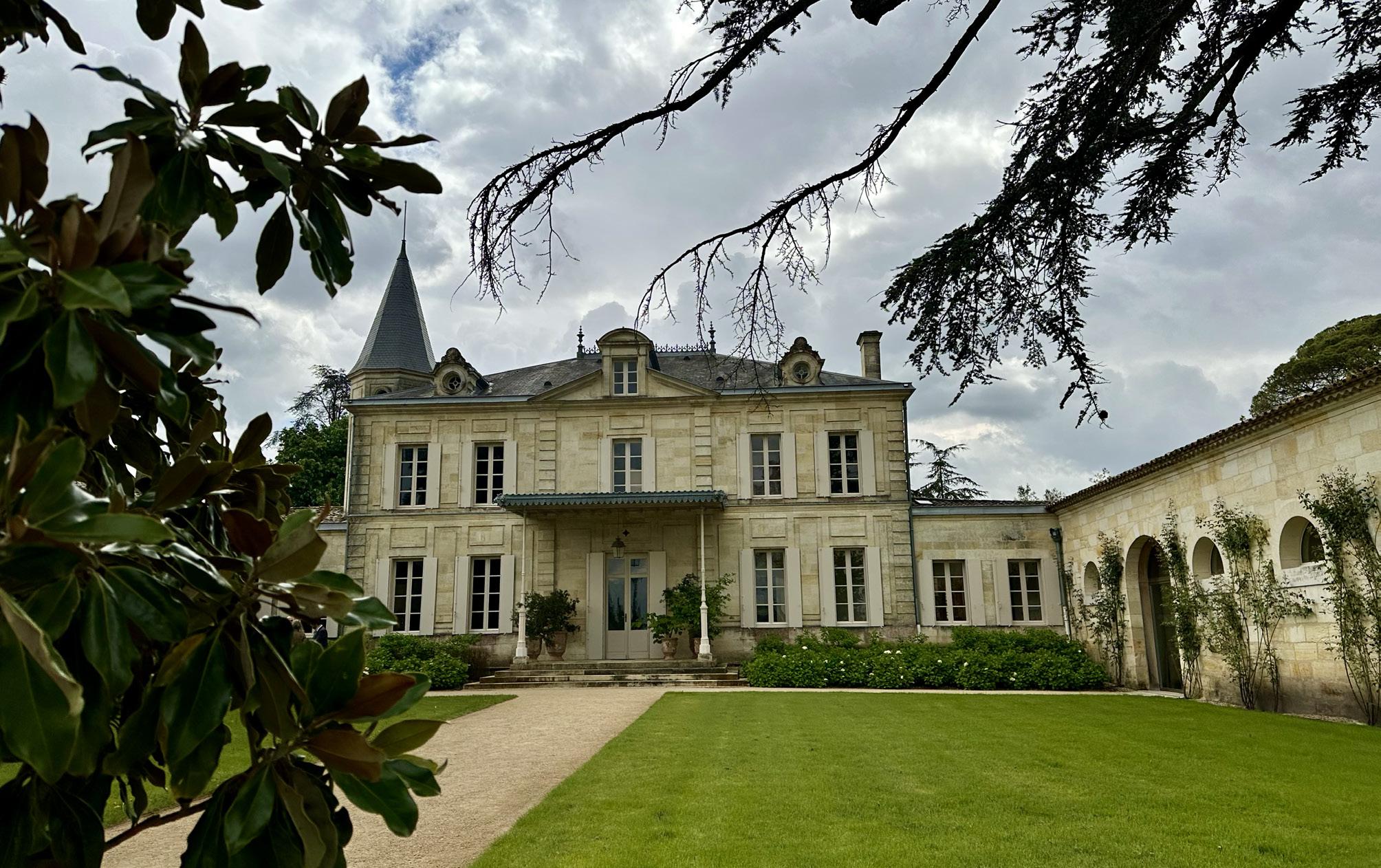
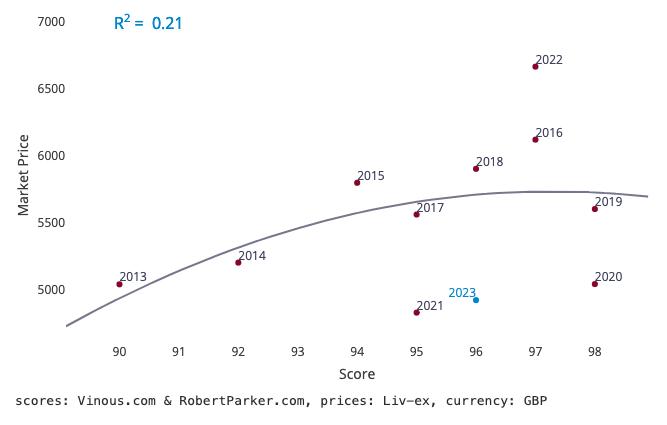
EXPLAINING LIV-EX
FAIR VALUE
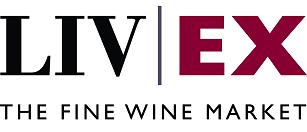
When judging which wines offer value for money I employ a suite of proprietary data tools which mark amongst other things the scores from the leading critic (Neal Martin of Vinous) and other top critics (William Kelley of The Wine Advocate & Jane Anson, formerly Decanter’s Bordeaux critic but now running her own website Inside Bordeaux), the release price, the reduction in allocations & general production numbers. I then benchmark this data against back vintages of the wines in question, comparing the price performance of both similar vintages, and similarly-rated iterations of the wine.
Underpinning my decisionmaking is Liv-Ex’s ‘Fair Value’ tool. In their own words its “methodology represents a useful approach to pricing wines. It uses regression analysis to measure the relationship between price and quality and establish the fair price of a wine based on its critic score and vintages already available in the market. Where there is a correlation (R-squared) between the scores and prices of over 50%, the trend line suggests a wine’s ‘Fair Value’”
For example, the graph above plots the Fair Value data for Château Lafite Rothschild, whose 2023 has just been released at a 32% drop in price compared to the 2022 vintage.
With a score of 96 (97-99) points from leading critic, Neal Martin (though other critics like Jane Anson have awarded a potentially perfect score of 98-100), ‘fair value’ would be a release at £5,700 per 12x75cl, or below. Last year the wine was released at £7,140, so this drop of 32% places the 2023 well below the fair value line, meaning it is extremely investable, if you can get your hands on it.
I will monitor this data throughout the en primeur campaign for each and every release, to ensure Clos delivers true value to those buying the 2023s.
06. PICKS OF THE VINTAGE
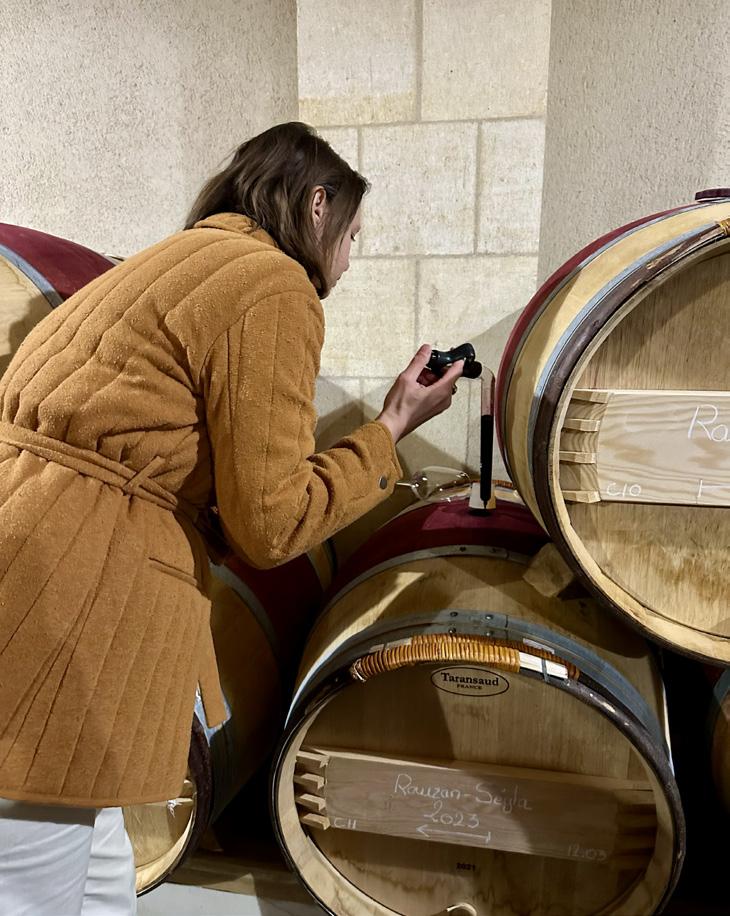
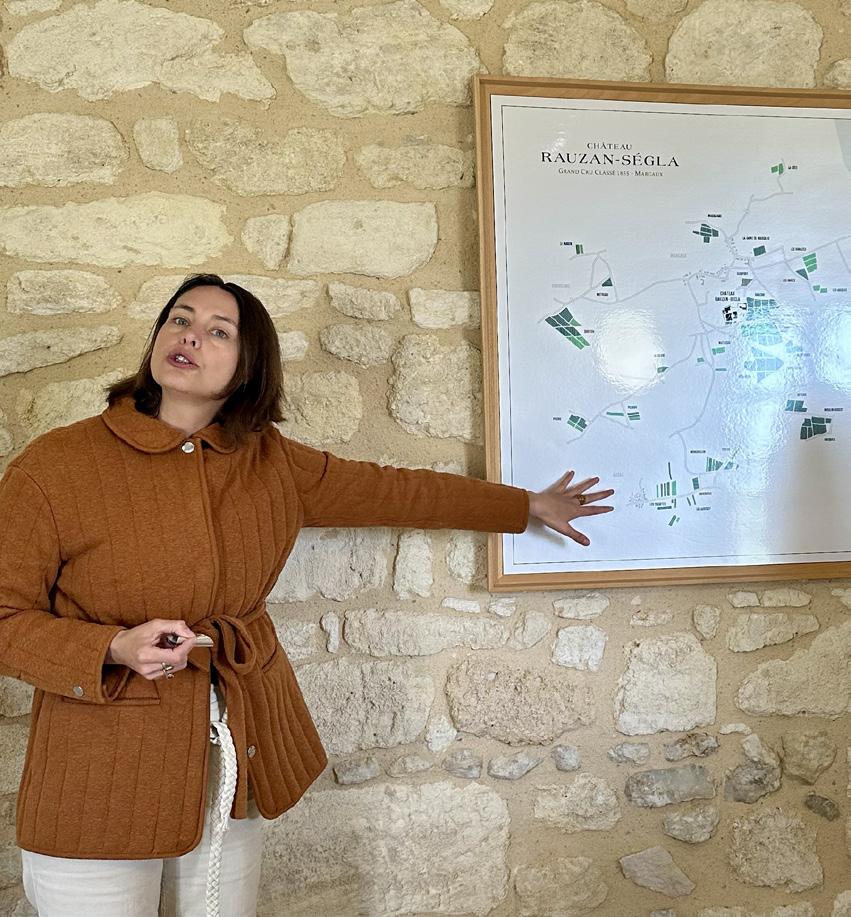
Now that I have tasted all the key wines & cross-referenced my scores with the critics, a picture has emerged for me of which wines have the potential to offer the best value in each appellation at both ends of the pricing scale. As wines continue to be released over the next month in what is likely to be an unprecedentedly short and intense en primeur campaign, I will analyse release price data to ascertain which wines offer you the best value for money, whether they be for drinking or laying down as an asset.
Over the next few double page spreads, I have selected two standout wines each from six main appellations across Bordeaux. On each wine page you’ll find an overview of each wine consisting of the 2023 Neal Martin rating (in gold), plus historical ratings by the same critic alongside the current market value of the wine across the past three vintages: 2022, 2021 & 2020.
For added context I have also included Jane Anson’s view of each property, taken from her seminal book Inside Bordeaux, plus information about the respective producers and my own views of their 2023 offering. I hope that each double page will offer you good insight into the performance of each appellation in 2023, and I also include other wines I tip, at all price levels, from the appellation too, at the bottom of the left hand page.
If you have particular wines you’d like to register an interest in, whether or not they are included in the following pages, then please don’t hesitate to contact me via dominic@closfinewine.com
I cover some of my wines of the vintage in my video report, now live on YouTube which you can access by clicking on this link.


CHÂTEAU PHÉLAN SÉGUR
92-94 points

Neal Martin, Vinous
This has a very pure bouquet. You can actually tell that there is less SO2 being employed here since it displays that strong crushed strawberry fruit, almost confit-like character, turning more floral with aeration. The palate is medium-bodied with fine-boned tannins. This is very well balanced… there is just a touch of balsamic that perks up the finish, while graphite notes join the chorus line toward the close. Quite an “involving” wine in the cards, this will be fascinating to revisit once in bottle.

This is a definite star in the appellation, a former Cru Bourgeois Exceptionnel, and in my mind would make it into a new version of the 1855 classification if one ever came around. You can expect huge consistency - always a mark of a great estate - and plenty of character: finessed tannins... excellent ageing ability & a raft of complex flavours.

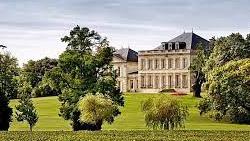

Philippe Van de Vyvere, a Belgian who made his fortune in shipping bought Phélan Ségur in 2017, instigating a immediate focus on sustainability and precision viticulture, which uses GPS and drones to micro manage plots of vines which average 35 years old. A 4.5ha walled plot around the château is farmed entirely organically.
There are strong nods to the Irish heritage of this property, which was created by Bernard O’Phelan, who left Tipperary at the end of the 18th Century.
For the third year in a row I was blown away by this inexpensive Saint-Estèphe awarding it 93-95 points noting its “floral nose of peony and iris, wild mint, cedar & white pepper. The tannins are ripe and giving and the finish is persistent and tensile, full of freshness and minerality. Excellent again from this estate”. This is again one of the value picks of en primeur - don't miss out.

CHÂTEAU MONTROSE

96-98 points
 Neal Martin, Vinous
Neal Martin, Vinous
The 2023 Montrose is focused on the original terroirs of the estate, known as Terrace 4, located in front of the river. It has a very intense & focused bouquet: pure black fruit with just a touch of strawberry, hints of violet petals developing in the glass. The palate is medium-bodied with fine boned tannins –very pure, with pitch perfect acidity. This gains depth toward the finish but maintains a sense of linearity that ensures it is one of the vintages finest contributions from the Left Bank. Magnificent.

Long seen as the First Growth of St-Estèphe, for reasons that extend far beyond the hiring of two ex-First Growth directors. Montrose makes wines that show a classic, muscular and long-living interpretation of the appellation. A sum of painstaking detauls that have helped to make a wine, long known for its ageing ability, fleshed out, polished, & given every chance of success. Hard not to get excited about what is going on here these days.
The Bouygues family have been the owners of Montrose since 2006 and they have overseen extensive development of the estate, most notably the 10,000sq-metre cellars completed in 2013 which dive six metres below ground and are replete with green techniques, from geothermal energy to photovoltaic panels.
Montrose’s close proximity to the river (right) has been a feather in its cap in warmer years & increased focus on terroirs has led to more opulent wines. I gave Montrose a very high score of 96-99 points, writing, "Bramble fruits, blackcurrant compote, black plum, black cherry, red plum, liquorice, vanilla pod, wild mint & blackcurrant leaf, cedar, clove, terracotta, marine scents. The black fruit and florals hum. The palate is densely profiled, tannins are ripe & chalky, giving good tension with the general acidity. I get the feeling that this is a wine for the longer term, where it will be a giant." Get your hands on some.
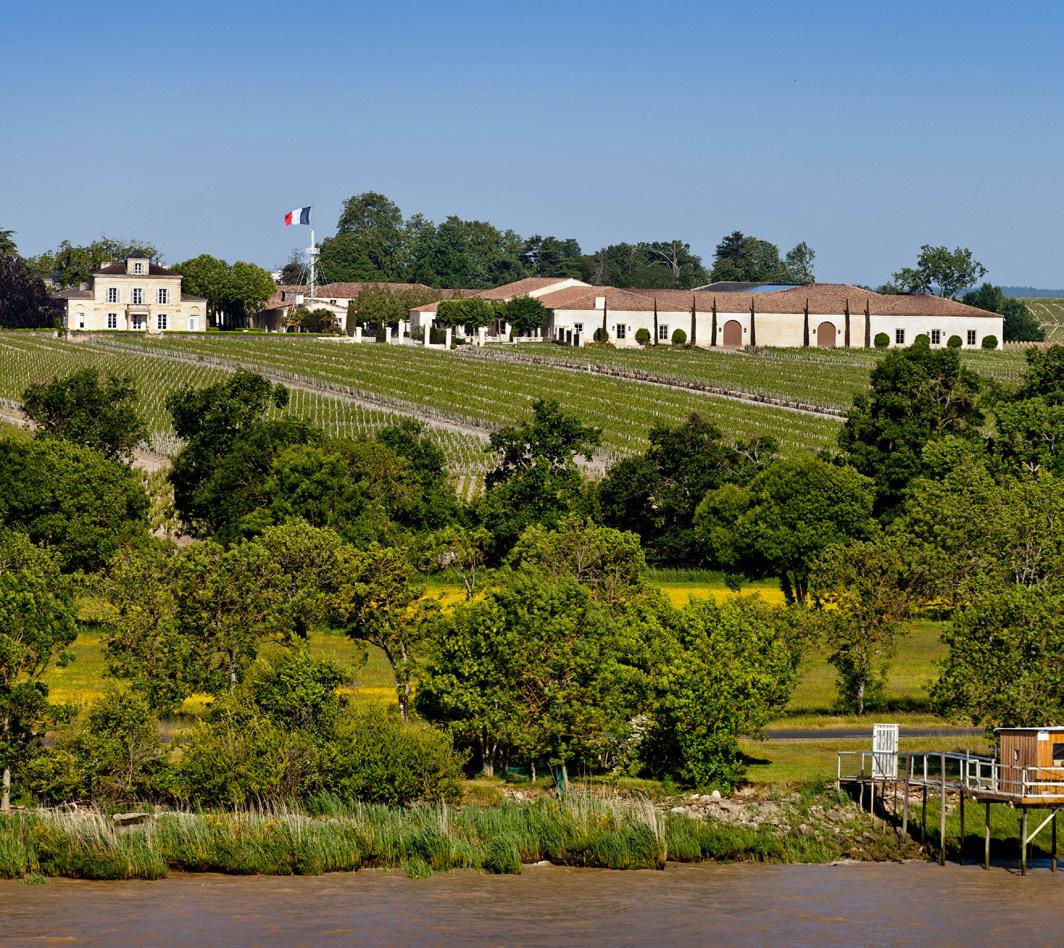



CHÂTEAU PONTET CANET
93-95 points
 Neal Martin, Vinous
Neal Martin, Vinous
The 2023 Pontet Canet has a very pure bouquet with dark cherries, blackcurrant and touches of vanilla, cohering over the course of ten minutes in the glass. The palate is medium-bodied, with very supple tannins matched by a keen line of acidity. There is plenty of creaminess on the mid-palate, fine grip and a pinch of black pepper toward the finish. Moderate in length, there’s lovely linearity here and an underlying salinity that becomes evident with continued aeration. Very fine.

Everybody's favourite Super-Second story, Pontet Canet has been hugely influential over the past decade, cheerleading the idea of a classified estate embracing a more ecologically-sound approach through organics & biodynamics. What does all this do to the wines? The acclaim that has greeted recent vintages makes that clear: this has leapt up to true Super-Second status and delivers rich & succulent cassis, slate and bilberry notes that vibrate with energy.
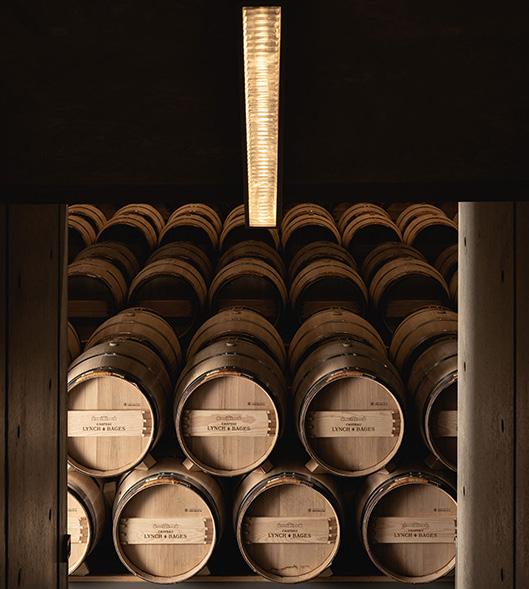

Officially a Fifth Growth in Pauillac, Pontet Canet as, as Jane Anson suggest, catapulted itself into true Super-Second territory under the careful and passionate leadership of the Tesseron family.
The traits of biodynamicism are everywhere to be seen during en primeur week, from their concrete (and now wood) egg vats, to the famous shire horses that till the fields. Following biodynamic practices in extreme weather years can be trying but the Tesserons see it as another opportunity to innovate, with their chalk-based sunscreen for grapes a novel but more importantly, effective way of protecting berries from extreme heat during the summer.
I awarded the 2023 96-98 points, loving its "Deep black plum, blackberry, mulberry, damson, black olive, wild mint, peony, and crushed limestone nose. Super mineral character and consistently refreshing".
Other top picks from Pauillac in 2023: Mouton Rothschild, Pichon Comtesse de Lalande, Duhart Milon, Batailley, Reserve de Comtesse

CHÂTEAU LAFITE ROTHSCHILD

95-97 points

Neal Martin, Vinous
This takes time to unfurl in the glass, slowly revealing black fruit laced with pencil box and just a touch of pressed violet. There’s wonderful precision here. The palate is medium bodied with a cashmere texture, very pure (again) with a judicious dab of cracked black pepper. The finish is very sleek thanks to its almost filigree tannins, seeming to glide across the palate. This is a delicious Lafite Rothschild no doubt, but I want it to move me once in bottle. Maybe it will.

There are powerful names in wine, and then there’s Lafite. And somehow it has always been that way. So what makes Lafite so special? Well, there’s the gravel, gravel and more gravel - up to ten metres deep in some pleaces. [Winemaker] Eric Kohler described the key to Lafite as being ‘a spectrum of flavours rather than a strong expression of any particular one’ and I rather like what that captures.
Lafite is a firm investment favourite with me for several reasons, not least insatiable global demand for this First Growth, particularly from the Far East where it has become the poster boy for Bordeaux. As allocations have reduced, the price of back vintages has risen, making it a red hot asset. This is gold dust.
More than that, though, Lafite has consistently been at the pinnacle of winemaking in the region and their 2023 was a real star of the vintage for me, capturing the elegance and mineral precision of the year but not dialling down on the ripeness of the fruit. I awarded it 97-99 points writing, "Wild mint, iris, crushed rock, sous bois, morels, bilberry, sage, pot pourri, black olive, cedar, pencil shavings on the nose. This Lafite is elegant an poised with supreme balance. This is so assured, with a very long finish. A triumph". Easily one of the stars of 2023.
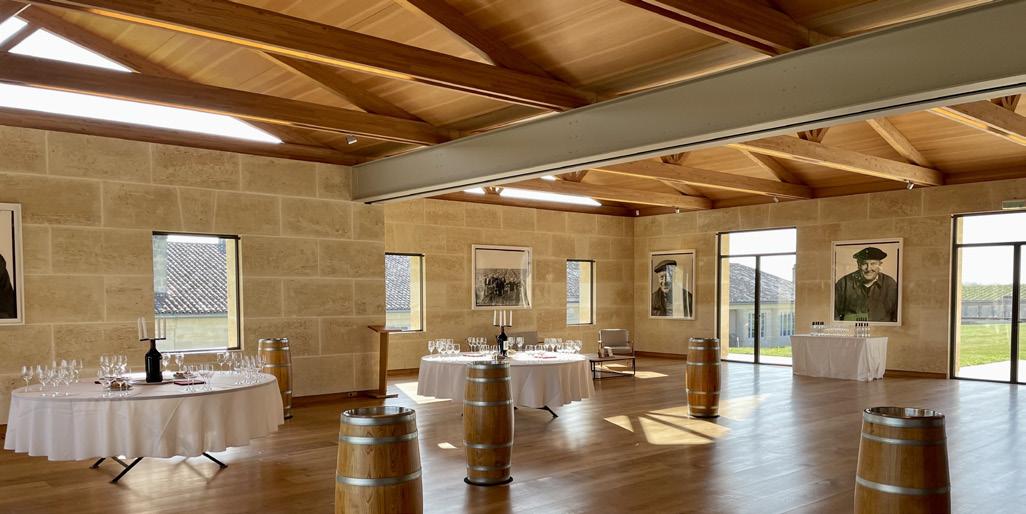
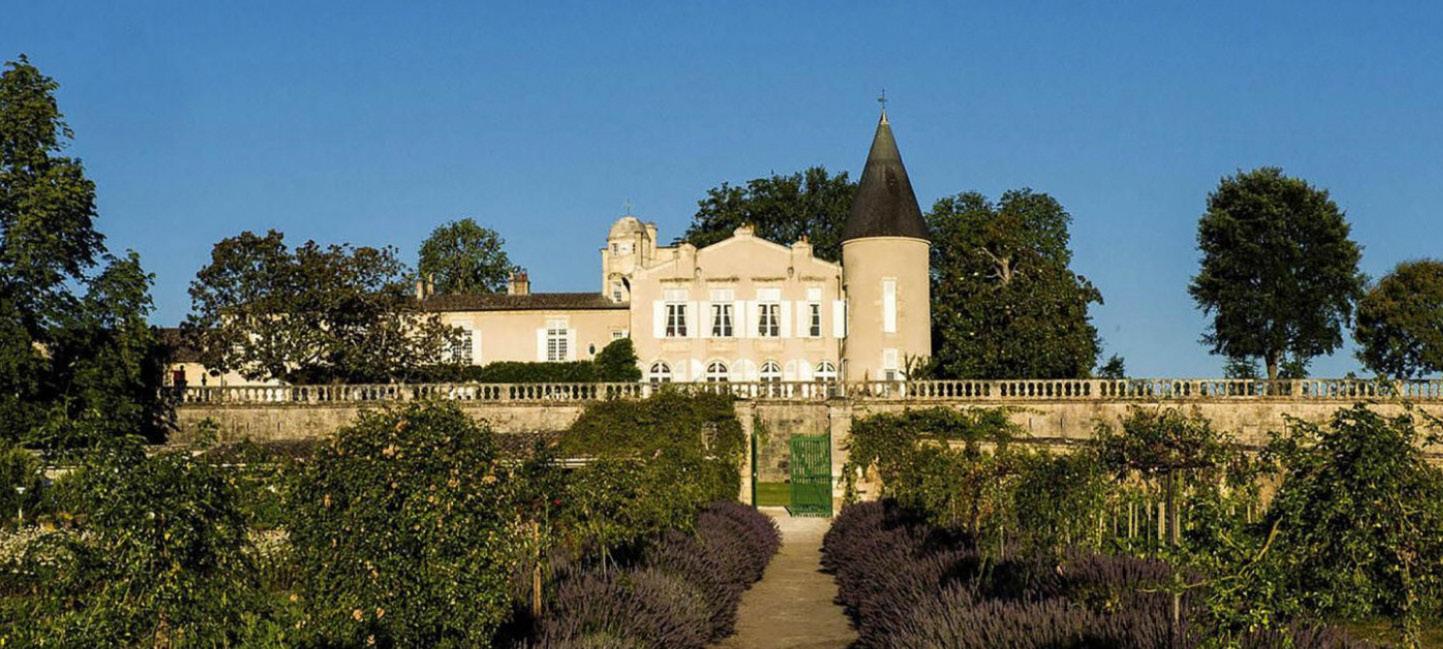


SAINT JULIEN
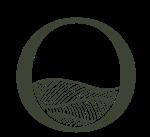
CHÂTEAU LÉOVILLE LAS CASES
95-97 points

Neal Martin, Vinous
This has a very precise bouquet, and, like the Clos du Marquis, it is imbued with an attractive estuarine element – aromatics that transport thew imbiber to the banks of the Gironde. The oak is neatly integrated; 80% is much more optimal than 100% would have been. The palate is lightly spiced on the entry, moderately deep and quite lively on the mid-palate. This is a more linear Las Cases than recent vintages, conveying a sense of “seriousness” toward the almost saturnine finish. Impressive in terms of persistence, this is a worthy follow-up to the magnificent 2022, but it will demand patience.

You want structure, confidence and longevity, you come here. The Léoville estate dates to the 1630s with the Marquis de Las Cases owner at the time of the French Revolution, when the estate was seized and split first into two, then three, parts. This is a wine that is often compared to its Pauillac neighbour Latour in profile, and is known for its ability to age – and then some more.

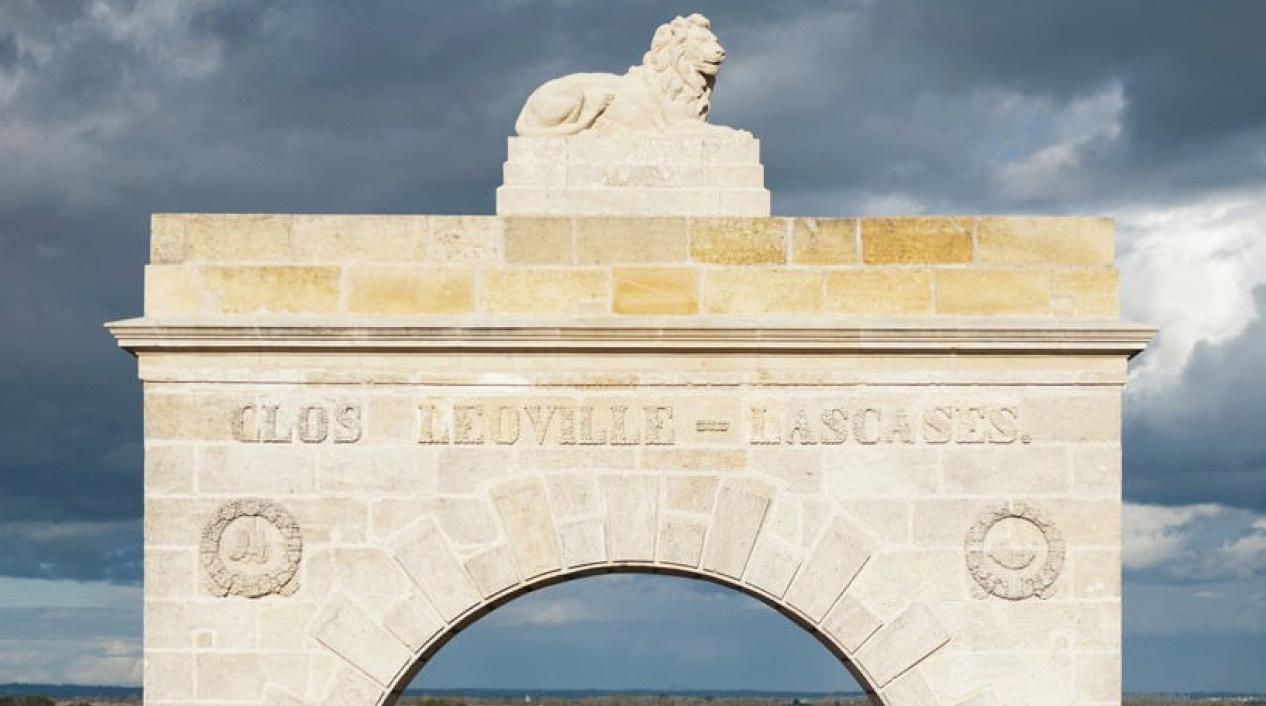

I have a particulalr soft spot for Léoville Las Cases, as I do any estate that features a Clos, our namesake. But here the Clos is very much the heart of the old estate, where vines grow on peyrosol gravel that is ten metres deep in some places.
The estate has an almost molecular level understanding of its own terroirs, underetaking detailed studies to uncover that the estsate features 16 different types of gravel, allowing them to treat these areas as individual parcels, and attend to the vines accordingly.
I tasted the 2023 with the winemaker at Ch. Nenin in Pomerol (one of the other estates in the Delon stable) and was enchanted, awarding it 97-99+ points, denoting its flirtation with perfection and writing, "supremely elegant on the palate, sensuous, regal: tannins are ripe & delightfully integrated. Fruit, purity & precision, so cerebral, This is magnificent".
Other top picks from Saint Julien in 2023: Léoville Barton Clos du Marquis, Talbot

CHÂTEAU BEYCHEVELLE

92-94 points

The 2023 Beychevelle has a notably floral and tightly-knit bouquet, leaning a little more toward blue fruit than other Saint-Julien wines tasted from barrel. The oak is nicely integrated. The palate is medium-bodied with strict tannins that impart a sense of linearity. Very saline, this is a saliva-inducing Beychevelle, lightly spiced with a structured, almost Pauillac-like finish. Excellent.

One of the highest proportions of Merlot in St-Julien is found in Beychevelle’s vineyard; its currently at 40 per cent – but much of it from high-quality, 50-year-old vines. Sustainable agriculture is the watchword throughout the vineyard, with chemical herbicides replaced since 2005. New hedgerows increase biodiversity and since 2008, one-third of the land has been farmed organically.
This is another excellent Beychevelle and a wine which performs consistently well in the Fine Wine market. It is a perennial favourite with the English market, as well as being followed by the Chinese, due of all things to the dragon on the bowsprit.
Yes, it is not as substantial, investment-wise, as a Lafite or an Haut Brion, but no one can argue with its success. For example, the similarly-rated 2020, has already appreciated by 16% since release. Beychevelle is one of the wines of the region to be seemingly immune to the financial headwinds that occasionally buffet the Fine Wine market.
I awarded the wine 96-98 points, loving its "nose of inky black fruits, damson, fig, then blueberry, redcurrants, flecks of pink pepper, hoisin, terracotta and oyster shell. Incredibly fresh & light, but always ripe fruited and delivering a full, generous mouthfeel, this is excellent".
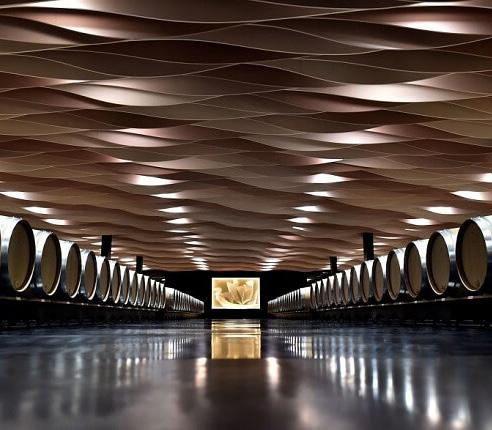



CHÂTEAU RAUZAN SÉGLA
93-95 points

Neal Martin, Vinous

This has a very aromatic bouquet of wilted violets, black cherries and hints of camphor, with a faint oyster shell note lingering in the background. The palate is medium-bodied with fine grained tannins. This is endowed with tension and purity, while a light marine influence imparts character. Armed with an energetic, spicy finish, this is a more classical Rauzan-Ségla that deserves five or six years in bottle. Even so, it already conveys an air of sophistication. This is just one of a handful of estates – alongside Chx Margaux and Palmer – that are truly setting the bar for wine quality in Margaux. It helps, of course, to have the money available for investment, and the Wertheimers certainly have no worries there. Alain is the chairman of the board of Chanel… Rauzan turn out extremely consistent and highly-polished wines that still manage to convey a sense of heart and excitement.



Much is made of the investment that owners Chanel have put into Château Rauzan-Ségla but it has never come at the expense of a sense of place or tradition. The property makes, as Jane Anson notes, consistently excellent wine which are hard to get allocations of. I was delighted to taste the 2023 from both barrel (three separate barrels made by different cooperages) and also bottle.
I was blown away by an outstanding wine, awarding it 97-99 points and writing, “Immediate scents of crushed limestone, violets, peony, maraschino cherry, bilberry, red plum, blackcurrant compote, vanilla pod and some cedar. So kaleidoscopic and inviting on the nose. A gorgeous mouthfeel on the palate to this Rauzan, tannins are ripe and very well integrated: the wine is almost silken. Absolutely outstanding”
If you can find some, this is definitely a wine to snap up.
Other top picks from Margaux in 2023: Marquis de Terme, Le Coteau

92-94 points


CHÂTEAU SIRAN
The 2023 Siran has a well-defined bouquet that is not as complex as the previous vintage. It is focused and delineated, with a black fruit mixed with graphite and melted tar, almost Saint-Julien in style. The palate is medium bodied with pliant tannins, quite minerally and lively without the depth of the 2022, yet rather elegant and refined on the finish. This constitutes a very gracious Margaux and as I tried second and third bottles towards the end of my trip, it just seemed to get better and better.

The Miailhe family has owned Siran since 1859, when they bought it from the grandparents of Toulouse-Lautrec. Located in the south of the appellation next to Chx Dauzac and Giscours, there is plenty of note going on at Siran – not least an extensive replanting programme. Siran was named a Cru Bourgeois Exceptionnel in 2003, but they choose not to use any classification today. This is a beautifully spicy and rich wine: definitely a name to follow.
Siran is a property that I’ve followed for several years now, and I love the wines they make, though it seems the secret is out, with Neal Martin and other critics awarding their wines higher and higher scores each year as the literal fruits of their evolutionary labours come to pass.
For somewhere between £15-18 a bottle, you can enjoy a fabulous Margaux, with those floral and black fruit aromas that mark the appellation out, but also earthier, spicy notes, too, and that really is what Bordeaux is about, superb vinous value at every price point.
I awarded the wine 91-93 points, loving its nose of "violet, wild mint, blackcurrant leaf, pomegranate, hoisin, pink pepper, and graphite. There is good mineral structure around a cool core with pleasantly grippy tannins and excellent acid on this finish”. This comes personally highly recommended.




PESSAC LÉOGNAN

CHÂTEAU HAUT BRION
96-98 points
 Neal Martin, Vinous
Neal Martin, Vinous
The 2023 Haut Brion was picked at the same time as the La Mission Haut Brion, albeit the secateurs sheathed one day later, on October 6. The nose is less immediate than the La Mission and the fruit is a little darker: blackcurrant, juniper, hints of black olive and a light cedar scent. The palate is medium-bodied with fine grip and tension. This has superb energy, presenting a crescendo of flavours toward a complex and persistent finish that lingers in the mouth. There is real pedigree to this First Growth, and it will certainly give 30 to 40 years of drinking pleasure.

Of all the 1855 First Growths, Haut Brion is unquestionably the one with the greatest claim to being the actual First of the Firsts in terms of longevity & historical influence. There is a beauty to the wine that is often the benchmark for what can be achieved in any given vintage in Bordeaux. It displays incredible aromatic complexity as it ages, easily rivalling Ch. Margaux in that respect.


Haut Brion continues to fulfil all of the criteria for an investment grade wine, consistently being awarded perfect or nearly perfect scores by the top critics, enjoying good liquidity on the market and being in constant demand.
Haut Brion is always a pleasure to visit and taste and I was enamoured with the 2023 offering, a wine that, for me at least, puts real daylight between itself and La Mission Haut Brion, the younger brother snapping at its heels.
Awarding it 96-98 points, I wrote, “An opulent perfume that billows immediately from the glass, full of bramble berries, mandarin peel, damson and black cherry, with peony, iris flower and some lavender which become more heady with aeration. Crushed limestone, cedar wood, pink pepper, some rose petal and oyster shell. There is huge, uncompromising structure here:

CHÂTEAU HAUT BAILLY

96-98 points
 Neal Martin, Vinous
Neal Martin, Vinous
This has a beguiling bouquet that instantly switches on a metaphorical neon sign that announces you are in the presence of a very serious wine. Extremely pure and delineated, the nose presents aromas of blackberry mixed with wild strawberry, cedar and light sous-bois. It’s much more classical in style compared to the 2022. The palate is medium-bodied with fine-grained tannins that frame the blackberry, raspberry, cedar and graphite-infused fruit. It boasts more grip and persistency on the finish than its peers, with a residual subtle pinch of black pepper. This ranks as one of the standout wines in Pessac-Léognan perhaps in Bordeaux itself. Outstanding.

This has to compete for the title of best-loved Bordeaux estate, right up there with Léoville Barton & Lynch Bages. What people seem to love about Haut-Bailly is that it manages to impress, even bowl over, those who drink it without ever seeming to try too hard, or to push against any extremes. Elegant and yet rich & creamy, full of rich black fruits, all cushioned by fine tannins that confirm its long ageing potential.
The architect of Haut-Bailly's marvellous, modern chais must surely be a James Bond afficionado, with a particular penchant Ernst Stavro Blofeld’s lair in You Only Live Twice, such is the likeness. However, in place of intercontinental missiles, this concrete structure houses innovative, gravity-led vats, which allow for the most delicate handling of grape juice possible, allowing the minerality and freshness of their wines to sing forth, rather than be shaken and stirred.
I love Haut Bailly's 2023 offering, which I scored 96-98+ points, writing, "Lots of floral character on the nose, with peony, iris, violet, earth, sous bois, bramble fruit, blackcurrant, spiced black plum, redcurrant, terracotta, limestone and morels. On the palate the fruit is extremely ripe, so juicy, mineral, with a confident core. Tannins are ripe and very well integrated – super stuff: ripe, fresh, cerebral, with tension and lots of acidity & spice on the finish. So good". Grab some,
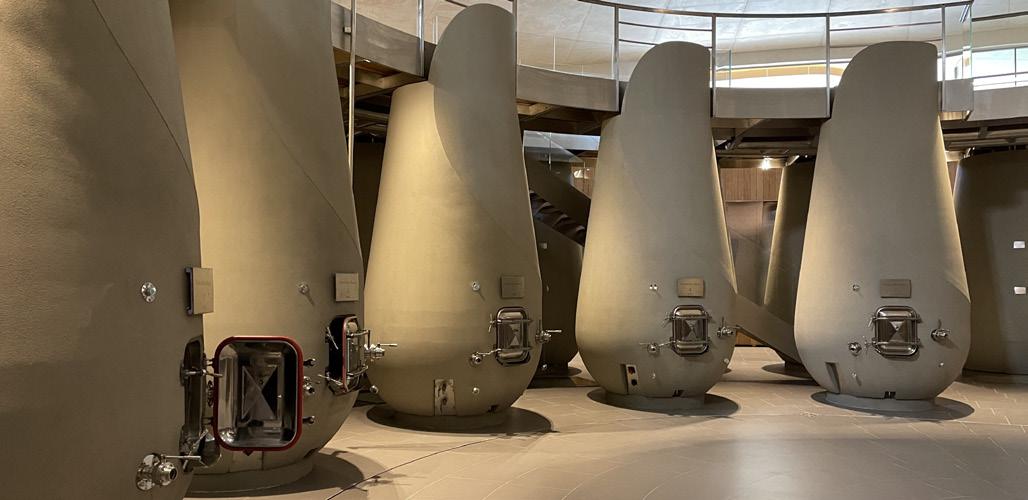
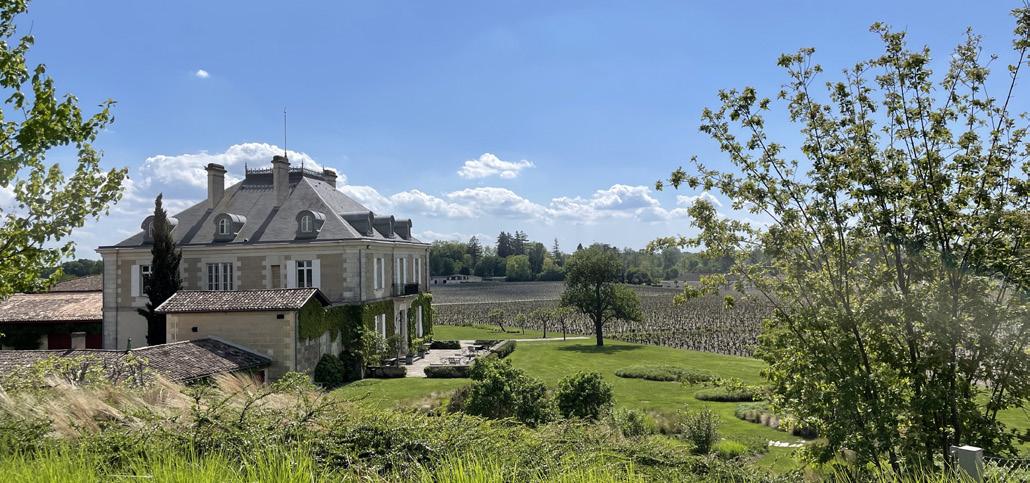

SAINT ÉMILION


CHÂTEAU CHEVAL BLANC
points
 Neal Martin, Vinous
Neal Martin, Vinous
The 2023 Cheval Blanc is uncharacteristically backward on first meeting, and it takes time to really fire up its engines. Quite strict and focuses (surprisingly so), the bouquet reveals black fruit, a touch of bilberry, with just a whiff of iris flower. The palate has wonderful symmetry, outstanding mineralité and ample tension. It’s extremely pure, with less weight than the 2022 but perhaps a touch more nerve. Modestly grippy on the finish, this “serious” Cheval Blanc will deserve several years in bottle. It’s cerebral… and I like that. The 2023 is very different from the 2022 – a beautiful minor chord.

Historically, Cheval Blanc has always been a leading estate in St-Emilion, dating back at least to the 16th century, and enlarged after the French Revolution by plots purchased from neighbouring Ch. Figeac. The focus on aromatics –and particularly with Merlot on gravel – also explains why picking dates tend to be early for Cheval. Its easily one of the greatest wines of the region although it doesn’t always receive the same revered status as Ausone for some reason.
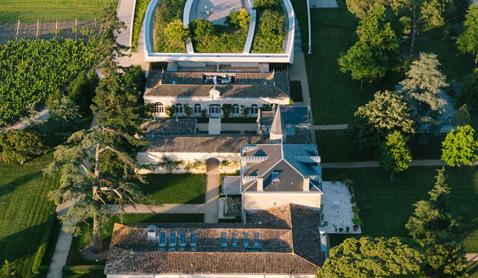


Cheval Blanc, owned by the goliath LVMH group, was once seen as a very good, but ultimately seriously over-priced wine from the Right Bank in Bordeaux. Thankfully, a change in philosophy starting with the 2019 vintage has seen much more attractive pricing, whilst the quality, thankfully, continues to rise.
The 2023, for me at least, is a perfect counterweight to the great 2022 and another feather in the cap of this wonderful estate. Awarding it 98-99+ points, just brushing with potential perfection, I wrote “a shy nose at first but with coaxing it delivers iris, bay leaf, heather, blackberry, blackcurrant, juniper, bilberry, cedar, crushed limestone, sous bois, and some mocha: an irresistible perfume. On the palate it is tensile with irresistible energy, ripe tannins, generous & delicately powdered, imbued with white pepper. The magnetic, crystalline structure lays the foundation for a persistent and profound finish. Magical".


94-96 points

CHÂTEAU CANON
The 2023 Canon has a perfumed bouquet with pure black cherries and touches of cassis and violet. The oak is beautifully integrated. Perhaps if I have to quibble, it is not quite as complex as the very best recent vintages, but that’s a high bar nowadays. The palate is medium-bodied with sappy black cherry fruit laced with iodine, and veins of blue fruit. There is a sorbet-like freshness embroidered throughout this Canon and it delivers a lovely cracked black pepper note on the finish. Excellent. Again.

All the grace & power that the plateau of St Émilion can deliver, dealt out slowly & precisely, with juicy blueberry fruits, fresh mint and a mineral grip to the finish. A wine that has been transformed over the past decade by careful vineyard work and ever more precise attentions in the cellar, and that leads the way in the resurgence of terroir studies in Bordeaux. Canon is stunningly situated, with views over two church spires and dry-stone walls that lace the top of the plateau forming ribbons between the vines.
I must profess I profound bias for the wines of Château Canon which have consistently delighted me during en primeur tastings for years. It is rare that the very essence of an estate, from its winemaking philosophy to its dry-stone wall-lined terroirs translates into the wine itself, but Canon manages it time and again, with wines of incredible purity of fruit, minerality and structural elegance.
It will come as no surprise then when I gave Canon 2023 a score of 96-98+ points, writing, "blueberry compote, violet, peony, blood orange, raspberry, rose petal, mandarin skin, strawberry, blackberry, lavender, crushed limestone, pink pepper, pomegranate: highly floral, fresh and inviting on the nose. On the palate this is supremely elegant and the tannins are supple, pliant and well-integrated, sensuous and providing wonderful tension with the excellent acidity. This is another superb Canon, bravo!".
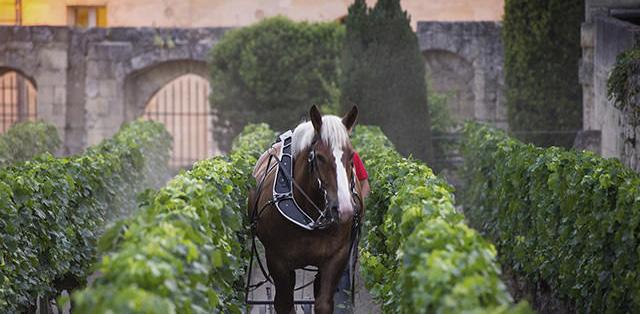



The Clos Fine Wine en primeur experience
All the wines highlighted in this Bordeaux 2023 en primeur report, and many more not featured due to reasons of space, will be offered en primeur, that is to say that they are currently still in barrel. They will be ready for delivery to the UK in 2026 which we will arrange.
All wines will be shipped directly to London City Bond to be stored under bond on your behalf, or you may request that the wines are delivered to you, which we can arrange at cost.
When a wine is removed from bonded storage, duty and VAT will be payable on the value of the wine and will be billed to you.
We will only ever offer wines to our clients which we would buy for ourselves. Wines must represent excellent value for money (considering the prevailing market). The 2023 Bordeaux campaign is the first time in several years where buyers can secure genuinely outstanding wines at all price levels and thus represents a wonderful buying opportunity for collectors and investors alike.
Many sought-after wines are offered first on an allocation basis to existing clients, but new enquiries are always welcome and we strive to spread such wines around. To get in touch regarding Bordeaux 2023, to send your buying wish list, or to be added to our mailing list, please contact dominic@closfinewine.com
